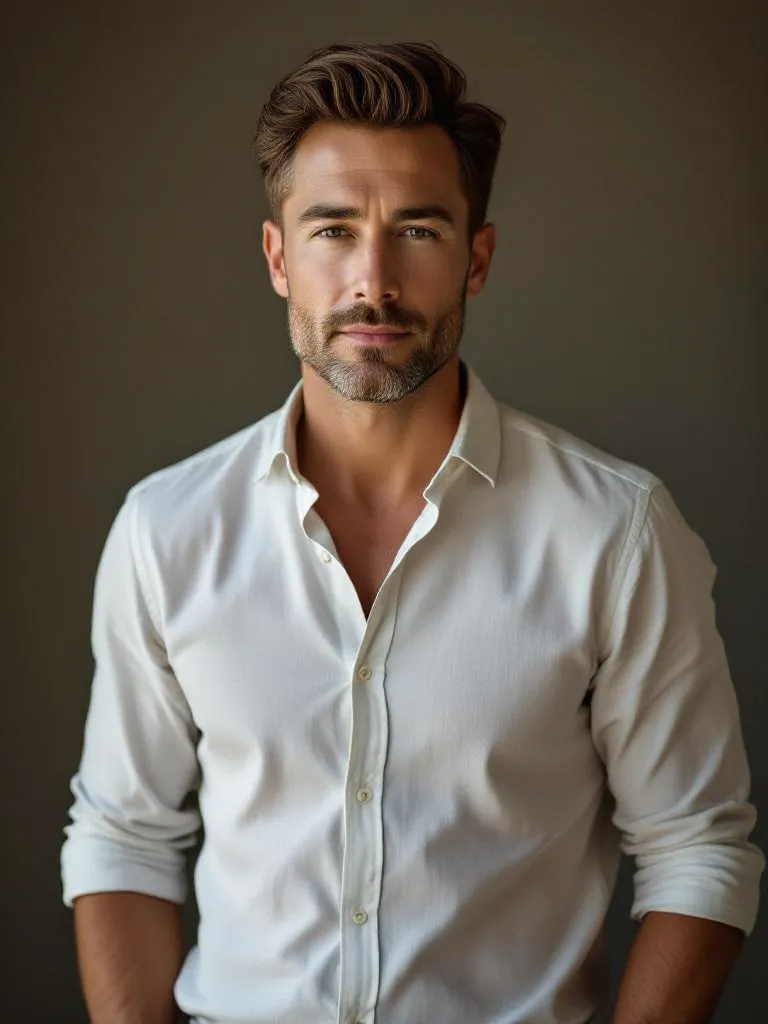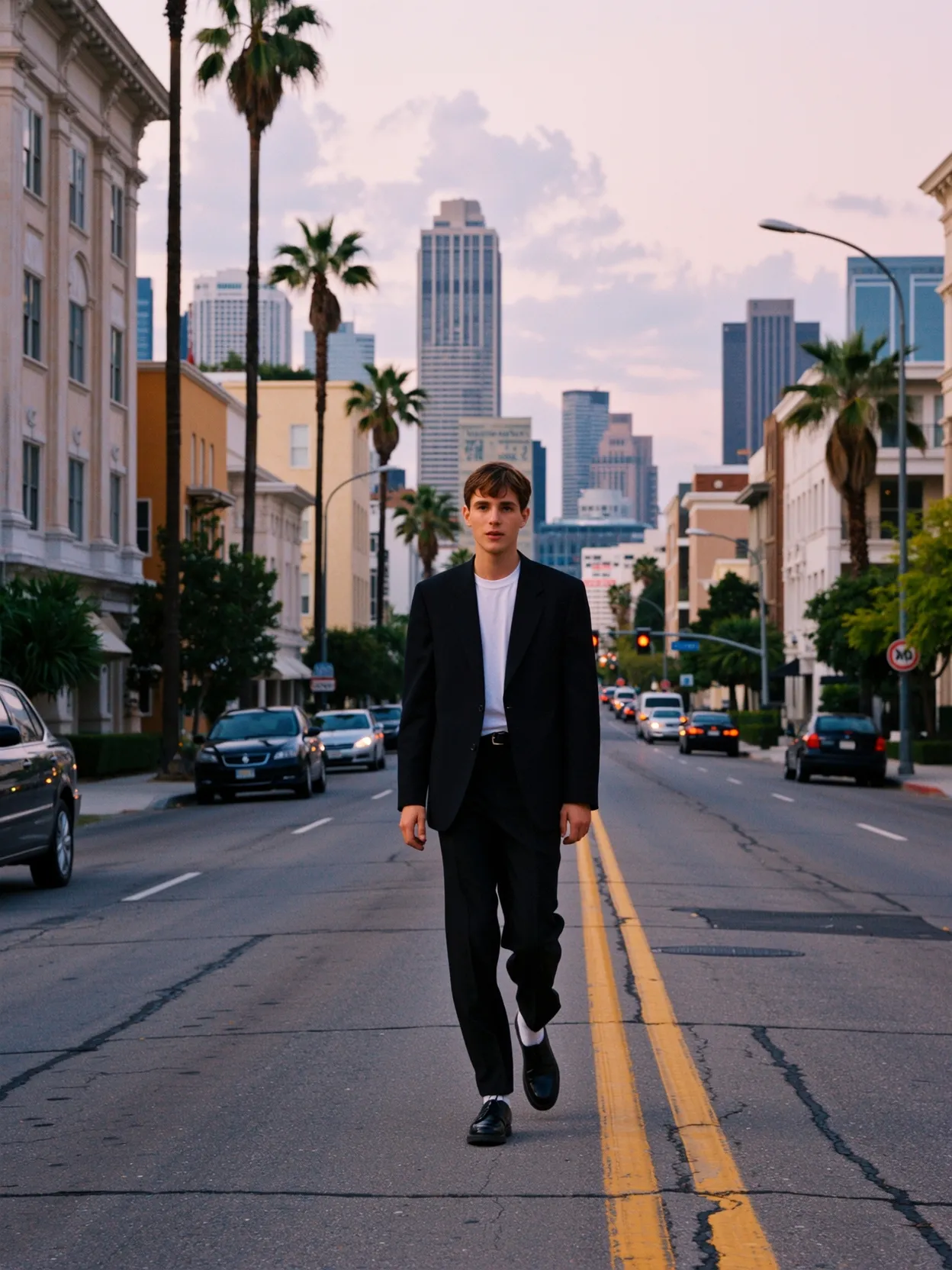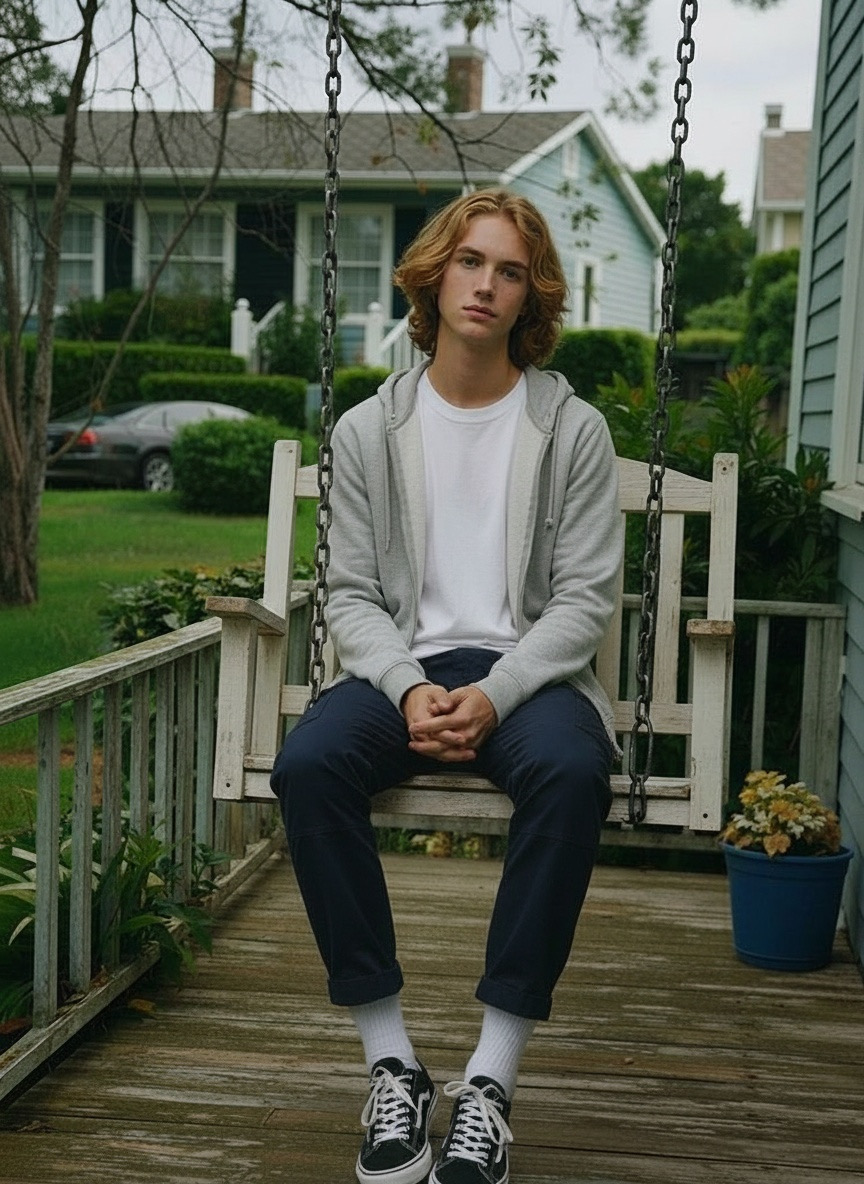

Written by Mo Kahn on
November 17, 2025
Full body portraits are more than just photographs of a person’s entire body; they capture the whole body, emphasizing the importance of including every aspect from head to toe in the frame. These images are often referred to as body photos, and they play a key role in portfolios and professional presentations. Creating an impactful full body photograph involves careful attention to pose, light, camera angle, and all the little details that show who someone really is. Whether you’re a photographer behind the lens or an artist creating through AI, mastering body portraits means understanding posture, proportions, and presence.
A full body portrait captures the person as a whole — from head to toe, every pose and gesture matters. Unlike headshots, which focus on the face, a body shot is a full body portrait that plays a key role in professional portfolios by showcasing posture, style, and personality. These are also known as full length portraits, especially in fashion or corporate settings, where capturing the entire subject is essential for conveying professionalism or brand identity. Body portraits show body language, confidence, and how someone fits into the scene. In addition to headshots and body shots, there are other shots—such as profile or three-quarter portraits—that serve different purposes and add variety to professional photography portfolios.
They’re common in fashion, lifestyle shots, and wedding photography, but also popular among creators who want to generate or shoot portraits that feel natural and alive.
When aiming to capture stunning full body portraits, the right equipment can make all the difference. Start with a good lens—ideally a 50mm prime—which is perfect for full body shots thanks to its natural perspective and ability to create a beautifully blurry background with a wide aperture. This helps your subject stand out while keeping the focus sharp on the body and face.
A camera with strong low-light performance and fast, reliable autofocus is also key, especially if you’re shooting indoors or in changing lighting conditions. Don’t overlook the value of a sturdy tripod for steady shots, a remote shutter release to avoid camera shake, and a reflector to bounce light and soften shadows. Investing in quality gear ensures your full body portraits are crisp, well-lit, and professional, letting you focus on capturing all the little details that make each portrait unique.
The key to a great body pose is relaxation. Most people freeze when facing a camera, so the goal is to make them stand comfortably and pose in a way that feels natural. Effective posing is essential for guiding the subject to achieve the best results.
When aiming for natural and confident full body portraits, mastering posing tips and understanding various portrait photography poses are essential.
Here are a few classic tips:
Even small shifts in posture, hips, or head position can change the entire tone of the photo. Staying focused on these details will help you achieve the best results.
Great full body portraits start with thoughtful composition and orientation. Using the rule of thirds, try placing your subject off-center to create a more dynamic and visually interesting image. Aligning the body along one of the grid lines can add movement and balance to your photo, making the portrait feel more alive.
Consider the orientation of your shot as well. A portrait (vertical) orientation emphasizes the subject’s height and elegance, perfect for fashion or formal styles. On the other hand, a landscape (horizontal) orientation can showcase the environment and add a sense of space, ideal for lifestyle or group body portraits. Experimenting with different compositions and orientations allows you to create a variety of full body portraits, each with its own mood and style, and helps you find the best way to tell your subject’s story.

Camera angles decide how your portrait feels. A slightly lower angle can emphasize height and power, while shooting from waist height keeps proportions natural.
When shooting full body poses, remember:
If you want a blurry background, use a wide aperture like f/1.8 or f/2.2 to separate your subject from the scene.
Light can make or break your portrait photography. Soft natural light, such as golden hour or window light, enhances details without harsh shadows.
For outdoor shots:
For indoor photography, experiment with light direction. Front lighting gives clarity, while side lighting adds mood and depth.
Your location should complement the person — not distract from them. Keep the background clean but connected to the story you’re telling.
Different backgrounds—such as seamless, plain, or environmental backgrounds—can significantly influence the composition and professional presentation of full body portraits.

Collaborating with models is a fantastic way to refine your full body portrait photography. Clear communication is essential—guide your model through poses, facial expressions, and body language to achieve the look you want. Offer gentle direction and encouragement to help them relax and feel confident in front of the camera.
A relaxed atmosphere leads to more natural and authentic body portraits. Encourage your model to move, try different poses, and express themselves. Pay attention to subtle shifts in posture and expression, as these can transform a good photo into a great one. Always be professional and respectful, ensuring your model feels comfortable and safe throughout the shoot. This approach not only results in better photos but also builds trust, making future collaborations even more successful.
A great portrait isn’t about technical perfection. It’s about connection. The best photographers know how to make their models feel seen, confident, and comfortable. When photographing, focus on capturing authentic body language to truly reflect the subject's personality.
Encourage your subject’s body to move — walk, turn, laugh, or rest. These gestures create natural body shots that feel real. Pay attention to how the subject's body, including arms, legs, and shoulders, align, and always watch for those unplanned moments — they often capture the most authentic energy.
Even seasoned photographers can run into pitfalls when shooting full body portraits. One of the most common mistakes is neglecting the background—clutter or distractions can pull attention away from your subject. Always check your scene before you shoot to ensure the background complements, rather than competes with, your portrait.
Lighting is another area where things can go wrong. Harsh or uneven lighting can create unflattering shadows or highlights, so always be mindful of how light falls on your subject’s body. Another frequent issue is stiff or awkward poses; without proper direction, models may look uncomfortable or unnatural. Watch out for foreshortening, where limbs closer to the camera appear disproportionately short—adjust your angles to avoid this.
By staying aware of these common mistakes and taking steps to address them, you’ll be able to create full body portraits that truly capture your subject’s personality and style.
Once your shoot starts, take a mix of full body, mid-thigh, and waist-height****shots. Changing distance and angles gives variety and helps you find the most flattering perspectives. Capture different types of pictures during your session, experimenting with poses, backgrounds, and compositions to create engaging imagery.
After shooting, fine-tune your photos:
These small tweaks make a big difference in portrait photography.
Looking for inspiration is a powerful way to elevate your full body portrait photography. Explore the work of other photographers—whether in online galleries, social media, or print publications—to discover new ideas for lighting, poses, and composition. Fashion magazines, catalogs, and advertising campaigns are also rich sources of creative body portrait concepts and styling cues.
Don’t be afraid to draw from other art forms, like painting or sculpture, to inspire unique full body poses and visual storytelling. Keeping a collection of reference images can help you communicate ideas to your models and experiment with new techniques during your shoots. By regularly seeking out fresh inspiration and references, you’ll keep your photography evolving and stay ahead of trends in full body portrait photography.

Don’t have a camera setup? You can still explore full body portraits through AI art. With starryai, you can generate stunning full body shots in just a few steps.
Here’s how:
Whether you want elegant body poses, detailed lighting, or cinematic camera angles, starryai lets you create it all — no registration required, no equipment needed.
It’s creative engineering for a new era of artists. The same instincts that once guided photographers now fuel AI creators. starryai simply makes the process faster, freer, and more fun.
From traditional portrait photography to AI-generated images, the goal stays the same — to capture the person, their energy, and their style.
A full body portrait isn’t just a photo. It’s a statement about balance, emotion, and design. Whether you’re holding a camera or typing a prompt, you’re part of the same creative story — finding new ways to see the human form in all its detail.